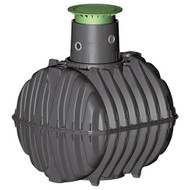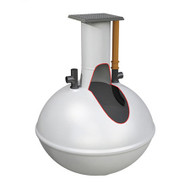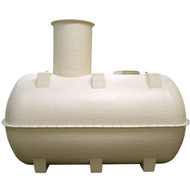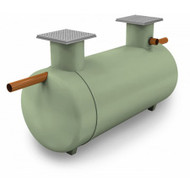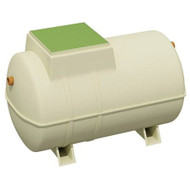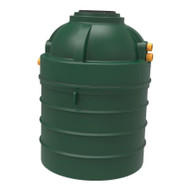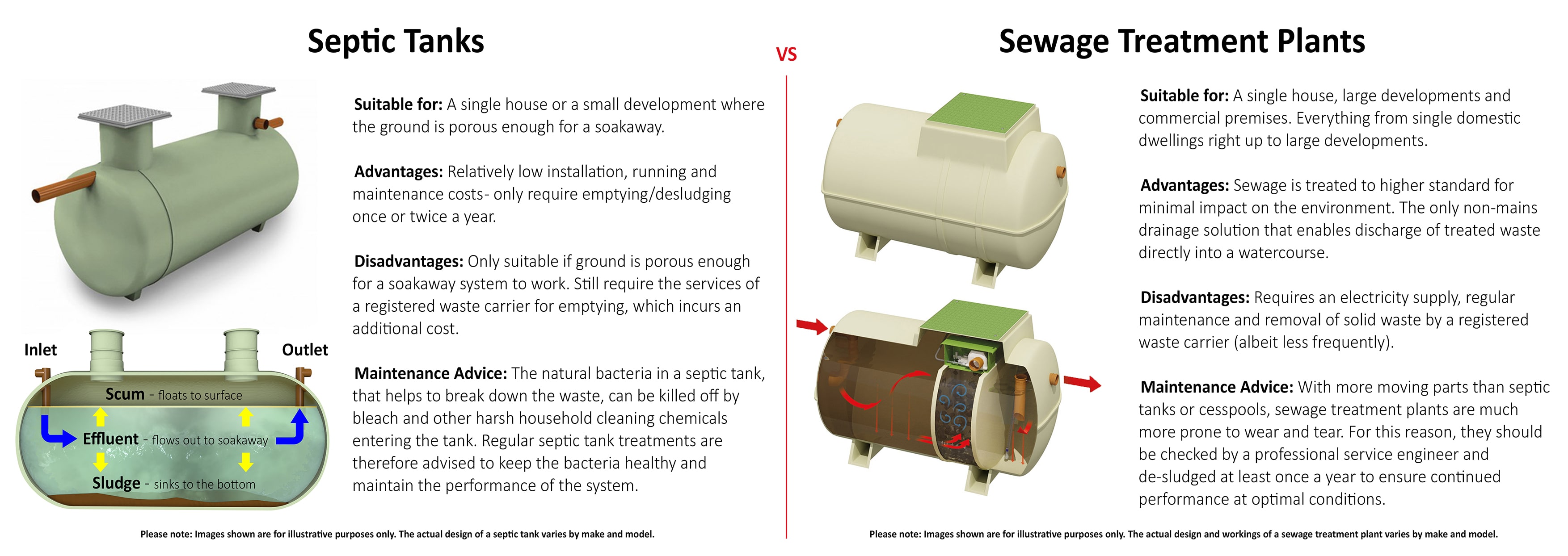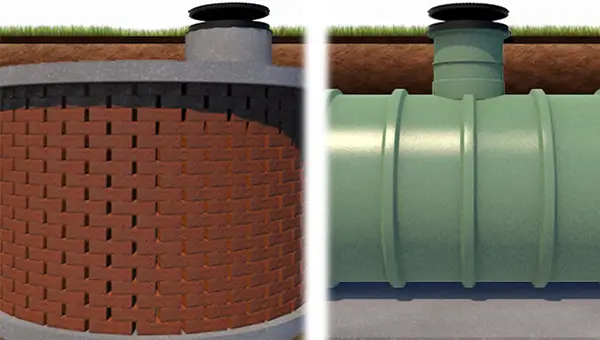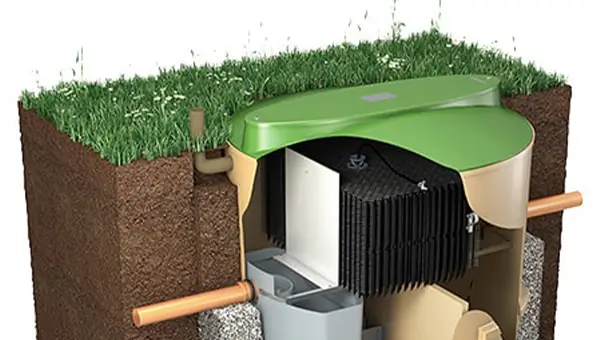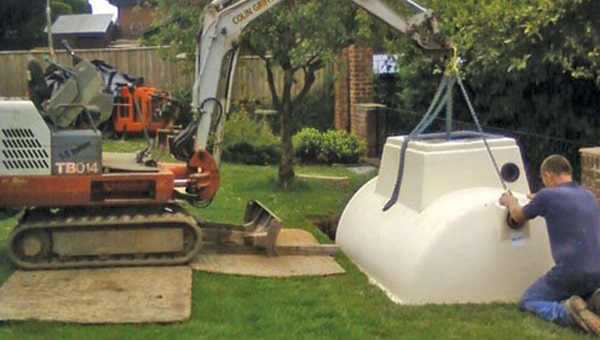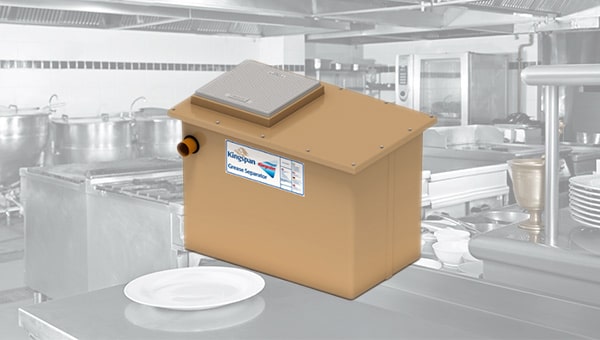UK Building Regulations state that, wherever possible, houses must be connected to the mains sewer (using a sewage pumping station if necessary) for the removal of sewage and wastewater. Only if this isn’t possible should you consider managing wastewater within the boundaries of your property, and even then, it would be wise to get the advice of a qualified expert before making any decisions.
If you're certain that you do need a non-mains system your two best choices for domestic properties are septic tanks and sewage treatment plants. But how do you choose the right one? We have the story!
Once upon a time on a plot far, far away from mains sewerage...
What’s the difference between a Septic Tank and Sewage Treatment Plant?
Septic Tanks
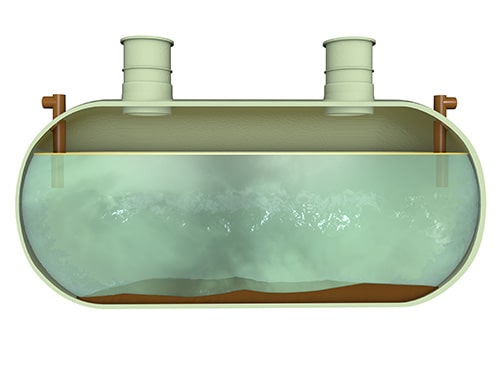
Septic tanks are the most common non-mains solution that most people think of when considering private drainage. They are step up from a cesspool, which can only store waste and must be emptied regularly, in that they are able to partly process and discharge some of the sewage collected. Whilst also installed underground, septic tanks, be they single or multi-chamber designs, utilise good ol' gravity to separate the liquid waste from the solid waste.
The liquids flow out of the tank into a soakaway (or drainage field) where they are dispersed into the surrounding soil, allowing naturally occurring aerobic (waste-degrading) bacteria to break down any remaining waste. The lighter solids, along with oil and grease, floats to the surface, while the heavy solids sink to the bottom of the tank where some of the ‘sludge’ is broken down by natural bacteria. However, because much of the solid waste will remain and build up over time, a septic tank will still need emptying at regular intervals (thought far less frequently than a standard cesspool) by a registered waste carrier.
While this makes them a fairly low cost and low maintenance option, there are stringent rules and regulations that apply to the installation of a septic tank that have to be considered, such as:
- A septic tank can only service the sewage and wastewater needs of limited number of people – check with your environment authority for advice: Environment Agency (England); SEPA (Scotland); NRW (Wales); or DAERA (Northern Ireland).
- Installation is not permitted in Zone 1 of a Groundwater Source Protection Zone.
- They can only discharge into a soakaway/drainage field which complies with Building Regulations or BS 6297;
- Must not be too close to any buildings, boundaries or watercourses;
- Must be away from electrical cables or pipework;
- Must not be part of a road, driveway or other areas trafficked by vehicles;
- Must have passed a series of tests to ensure the soil is suitable for drainage and there’s no risk of contamination to watercourses.
- They can no longer discharge directly into a watercourse under new environmental legislation.
Septic Tanks
Sewage Treatment Plants
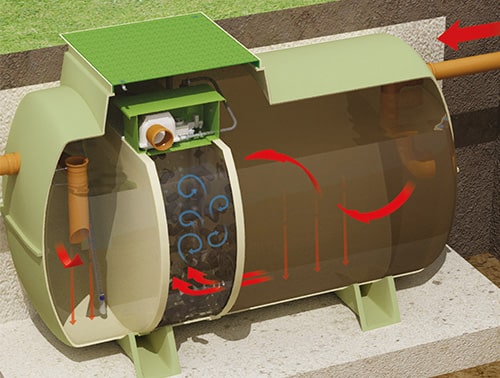
In comparison a sewage treatment plant is an evolution of septic tank design. They essentially do the same thing; separating liquid waste from solid waste and discharge into a soakaway. However, sewage treatment plants add an important extra stage in a process that makes the effluent discharge substantially cleaner and less harmful to the environment.
This is generally achieved through a three stage process. The first stage is the same as that of a septic tank, sewage and waste water enters a holding chamber where gravity separates the solids from the liquids. The liquid then flows into a second chamber, leaving the solid waste behind (for later removal by a registered waste carrier). The second stage then involves the introduction of oxygen into the system via an air pump. This encourages the growth of aerobic bacteria which works to break down the remaining sewage into a cleaner effluent within the tank. This bacteria infused liquid then flows into a final chamber where the bacteria, having done its job, is allowed to settle to the bottom (for recycling back into the first chamber) before the clean effluent is discharged.
This discharge can be into a soakaway, much as with a septic tank, or, thanks to the extra cleaning stage it has been through, directly into a ditch, stream or other watercourse (subject to the application for consent to discharge through your environment authority.
Though there are many variations in design (that all work slightly differently), all sewage treatment plants follow the main principles of this three stage process to ensure the discharged waste is as harmless as possible. This makes them suitable for the majority of sites, from small domestic houses to larger developments and commercial premises, and the most environmentally friendly option out of all the non-mains solutions.
However, this more sophisticated and highly efficient process does come with some caveats:
- Electricity connection - in order to supply the tank with oxygen, a sewage treatment plant requires a connection to an electricity supply and thus incurs an addition cost in operation.
- Regular maintenance - while they need emptying less often than a septic tank (generally once a year), the presence of more moving parts does make them more prone to wear and tear. For this reason, a sewage treatment plant will require more regular servicing and maintenance to ensure it continues to work efficiently.
- Higher initial cost - like for like, a sewage treatment plant is going to cost more initially than a septic tank, especially if there isn’t a watercourse or existing soakaway for it to discharge into.
Sewage Treatment Plants
Which system is best: a septic tank or sewage treatment plant?
There's no knockout winner choosing between a septic tank or sewage treatment plant; it depends on you circumstances, cost, permit requirements, and site restrictions.
If you're after a new system sewage treatment plants cost more to install, produce cleaner effluent and need an electrical connection, but require less emptying. Septic tanks initially cost less, but need more space, more regular emptying and can't discharge into a watercourse.
The most important thing is to make sure that, whichever option you choose, you are fully compliant with the current laws surrounding sewage treatment. If you already have a septic tank that discharges into a watercourse you will need to either switch to a soakaway discharge system or upgrade to a sewage treatment plant. Depending on the size of your garden, and the amount of waste your property produces, it could be quicker and easier to simply replace the septic tank rather than dig up your whole garden to install a drainage field.
Confusing? We got you. Weighing the pros and cons, the advantages and disadvantages of both systems can feel like a constant see-saw of indecision. Contact JDP for free impartial advice as to which system better suits you.
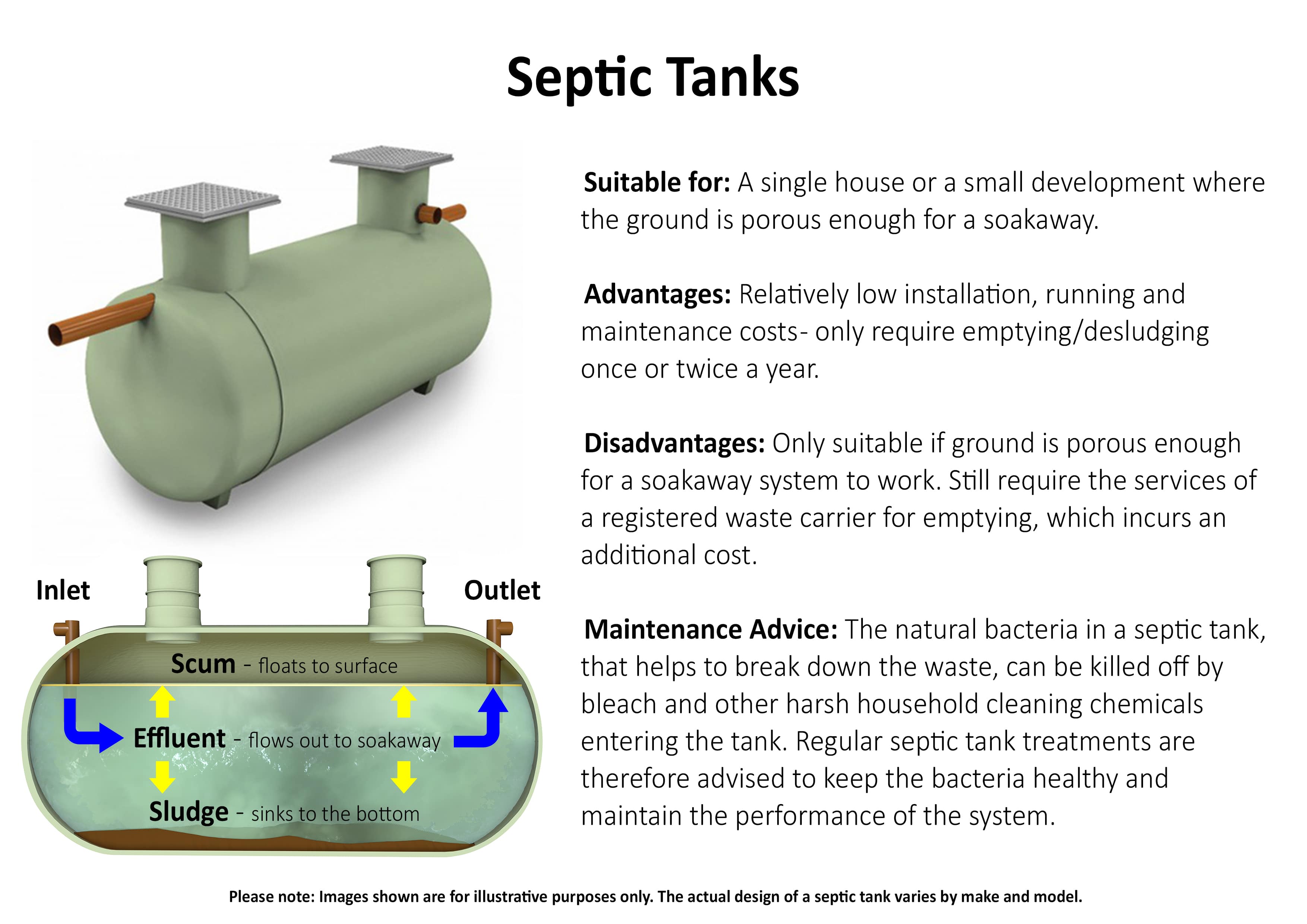
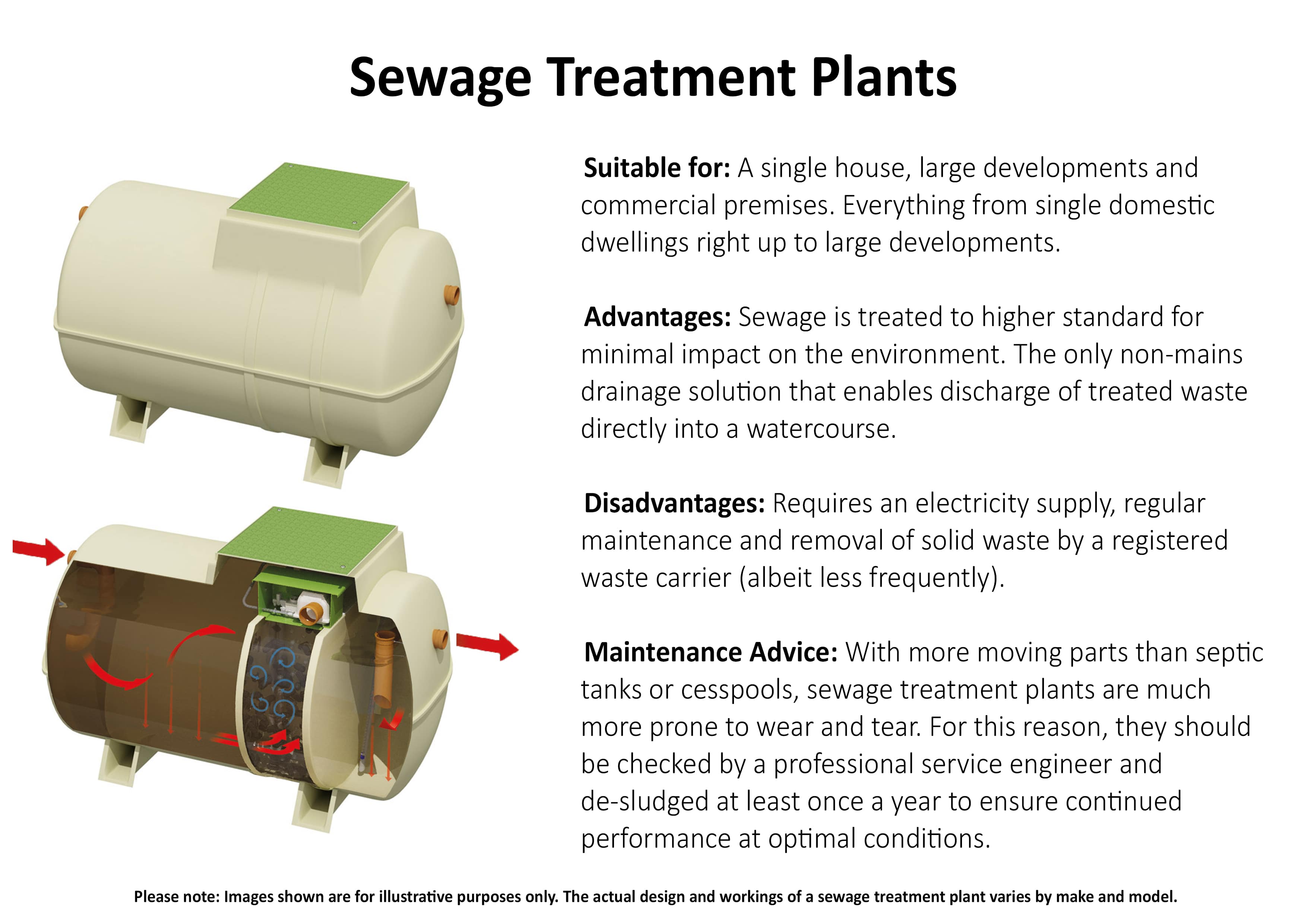
Ultimately, choosing between a septic tank or sewage treatment plant isn’t always as easy as simply deciding which one is best on paper. An off-mains drainage system should always be tailored to the requirements and limitations of each individual property and owner, and the size chosen should always be calculated to maximum potential requirements of your property. If you have a 3 bedroom house with only two people living there, you should still size your drainage system to cope with the needs of at least 5 people. Saving money now could cost you far more in the future should your family grow or you want to sell the property on.
Key things to remember in all situations:
- The legal responsibility for the waste lies with the property’s owner – failure to prevent that waste polluting the environment puts you at risk of prosecution under The Public Health Act 1936.
- Regulations can vary between country and county, therefore we strongly advise that you research these fully for yourself before making any decisions.
- Suitability of the ground should always be checked before a decision is made about which drainage option to go with.
- In the wrong location, a septic tank soakaway system can still contaminate groundwater with its untreated effluent – a site survey conducted by a qualified professional is highly recommended in all cases.
- If intending to discharge into a watercourse from a sewage treatment plant, you must first apply to/register with your environment agency.
- If informed you do not require a permit, you must still comply with various conditions including: following industry guidelines on the installation of septic tanks and sewage treatment plants; compliance with Building Regulations or BS 6297 regarding soakaway design; and complying with British Water’s advice regarding de-sludging and servicing.
- Whilst there is no longer any need to register a septic tank in England (Scotland, Wales & Northern Ireland still require registration) you should still keep records of maintenance or notify your environment agency if the discharge ceases.
- If you are in any doubt as to the suitability of your garden to filter wastewater, installing a sewage treatment plant may be worth the investment purely for your own peace of mind.
- When it comes to dealing with sewage remember it is best to be safe than sorry. Seeking professional advice will always be your best option.
If all this is giving you a headache though, or you are concerned about making sure your property is compliant with the new laws, our experts are on hand for more specialised advice.

